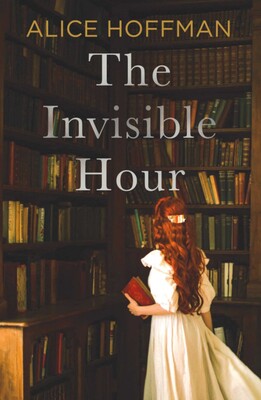The invisible hour by Alice Hoffman

Alice Hoffman makes an interesting link between a modern day cult and the religious zealotry of the times depicted in Nathaniel Hawthorne’s A scarlet letter (1850), set in the 1600s, about the branding of a woman with the letter A for adultery. In both scenarios, it is women who are oppressed, restricted in the choices they can make. Mia’s mother, Ivy, in the here and now, has run away from her disapproving parents, pregnant and spurned by the father of her child, and has turned to the dark and compelling Joel, leader of a reclusive cult in western Massechusetts. Joel, like the righteous men of Hawthorne’s novel, also makes recourse to branding for any misdemeanour. Mia sees the hidden marks on her mother’s arms.
Despite the strictures of their community, where books are forbidden, Ivy manages to share with her daughter a love of stories, and Mia secretly takes opportunities to visit the town library. There she comes across Hawthorne’s book, with a strange dedication to ‘Mia’ in its frontispiece. Libraries and books become a means of escape for Mia, and in real life librarians are her saviour when she finally makes the attempt to leave Joel’s malevolent influence.
The second part of Hoffman’s novel moves back in time to 1837, the world of Nathaniel Hawthorne, where he is struggling to find inspiration for his writing, until, one day he encounters a lone red-haired woman in the forest. It is Mia, her wish to be united with him magically come true. The dilemma becomes how to share her love with him, without changing the path of the future.
Hoffman’s writing is that of the fairytale teller; the author is omniscient, telling us what each person thinks and feels, and the actions they take. The reader accepts the magical events as they occur. And while the central theme is of the power of books to enrich our lives, there is also a strong emphasis on female collaboration, particularly the connection between mother and daughter.
Hoffman’s letter to the reader, as foreword to the book, describes how her mother, an outcast in their neighbourhood, cared for young single mothers and their babies, breaking the rules set by those in power, mostly men. This early experience, and the discovery of the magic of books to open new worlds, is at the heart of The invisible hour. It is captivating story, which will be enjoyed by many readers, not only the fans of Hoffman’s Practical magic series.
Themes: Books, Libraries, Cults, Women, Mother-daughter relationship, Love.
Helen Eddy